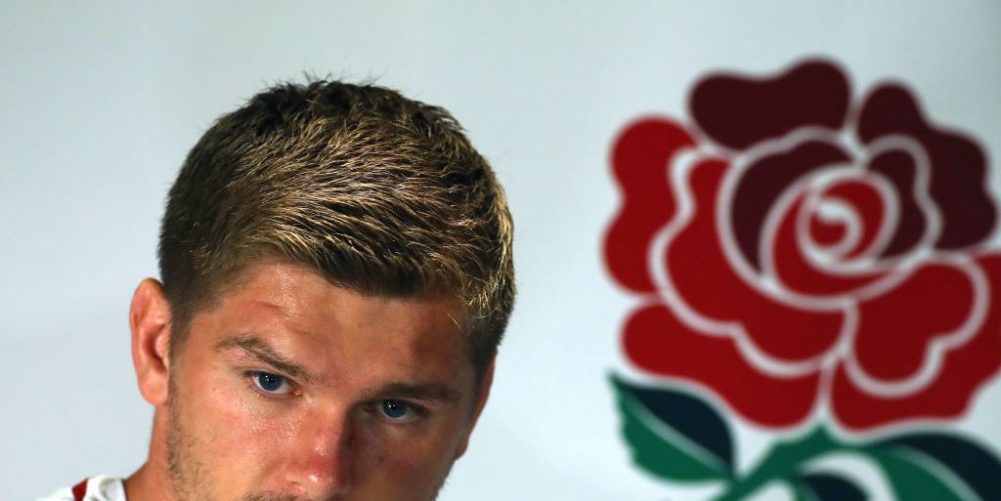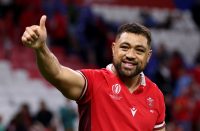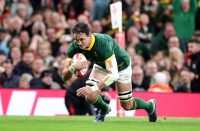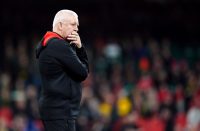APPEARANCES can be deceptive in World Cups. Even so, England seem to be in good shape going into the business end of Pool C, with two comfortable bonus point victories over Tonga and USA in the bag ahead of the decisive matches to come against Argentina on Saturday, and France a week later.
As we move from Tier 2 territory to face top end opposition there are, however, former England players who are not joining in the tub-thumping.
This week, Steve Thompson, England’s 2003 World Cup-winning hooker, said he has a nagging concern about the lack of leadership in Eddie Jones’ 31-man squad.
Thompson said the England coach has made a significant error in not including Saracens scrum-half Richard Wigglesworth in the party. His explanation on The Rugby Pod was that the veteran No.9 has shown that he is “someone that can control Owen Farrell when the pressure comes on”.
Thompson, who played alongside Ben Youngs during the 2011 World Cup, was also critical of the England starting scrum-half’s tactical acumen, and added that he lacked authority.
He described Youngs as a “tremendous player” when he is on the front foot and England have momentum. The sting in the tail is that Thompson said that when things get sticky it is a different matter, because, “when you need to think about the game he is all over the place”.
The former world champion pointed to the last game of the Six Nations as evidence of that Youngs shortcoming. “You saw that, especially against Scotland, he fell apart. You need someone that can go in there and control the game, control Owen Farrell as well, and take the pressure off the forwards.”
Thompson predicted correctly that England would put 40 points on the USA, but said he doubted they would win the five knock-out games from now that it would take for them to win the 2019 World Cup final.
My long-standing view has been that England need a world-class scrum-half if they are to win this World Cup, and Youngs has never managed to break through the barrier to claim that status.
It is why Jones’ scrum-half strategy has been consistently questioned in these pages, especially when it comes to denying leading Premiership scrum-halves like Dan Robson and Ben Spencer the chance to press their cases. The scrutiny only intensifies when you consider that the England coach backed Danny Care for the first three years of his tenure before jettisoning him this season, and promoting Willi Heinz at the last minute.
It is possible that Jones still has a trick up his sleeve, because the evergreen Wigglesworth is currently in Japan as a consultant coach with Canada, and could therefore be on the spot in the event of a scrum-half injury.
The alternative is that Youngs confounds his critics and produces a World Cup run of such verve and authority that England grow a leadership leg that, until now, has been missing.
A clear bonus for Jones is that George Ford, Youngs’ fly-half partner at Leicester, has pulled himself clear of the mire of mediocrity he was stuck in at Welford Road last season, re-emerging as an influential play-maker at the World Cup, and in the warm-ups leading into it.
Ford’s prompting and passing was influential in the 50 point rout of Ireland, when he had Owen Farrell outside him, but he was even more impressive when he was running the show himself against the USA on Thursday as fly-half and captain, before Farrell came off the bench for the last half-hour.
Ford not only showcased his great distribution skills from hand or boot, he also threw off the mental shackles to prove he has the footwork and acceleration to threaten defences himself – with his opening try against the Americans a case in point.
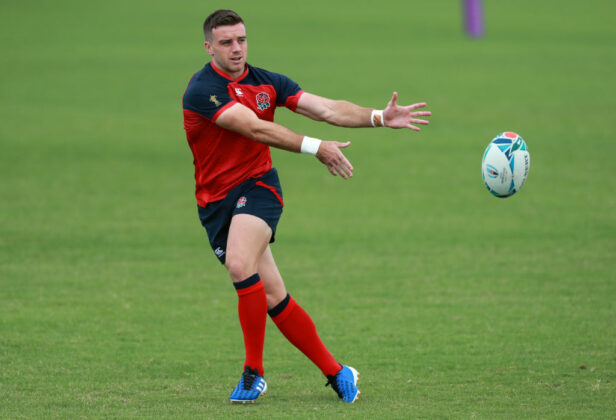
Admittedly, the armchair ride from his forwards, as well as fatigue in the US defensive line, meant there were many more gaps than there will be against Argentina or France – but at least it was a timely reminder to Ford that it is his all-court ability that made him World Junior Player of the Year in 2011.
Which brings us to the biggest tactical choice facing Jones as he makes his plans to send the Pumas packing.
It comes down to whether he picks Ford and Farrell in tandem at 10-12 against Argentina, or whether he reverts back to his Six Nations line-up of Farrell at fly-half and Manu Tuilagi at inside-centre.
It is not an easy call to make because England have been successful using both options. The unbeaten run in Jones’ first two seasons was built on the Ford-Farrell combination, with Jonathan Joseph at 13, and it was only discarded when it lost traction during England’s disastrous 2018 Six Nations campaign.
There was persuasive evidence that with neither Ford nor Farrell providing a running threat the double-playmaker attack was too lateral and lacking in penetration – as well as vulnerable in defence – and that Ford in particular had gone into his shell.
The upshot was that by the autumn 2018 series Farrell was installed at 10 with Ben Te’o/Manu Tuilagi at 12, and Henry Slade at 13 – and England beat South Africa and Australia, while losing to New Zealand by a single point.
By the start of the 2019 Six Nations the Farrell-Tuilagi-Slade combination was bedded-in at
10-12-13, and England produced arguably the best performance of Jones’ tenure by beating Ireland comprehensively in Dublin, before also annihilating France.
The reintroduction of Tuilagi after his career-threatening cascade of injuries was transformational in giving England a direct midfield running threat that had not hitherto existed under Jones. The arrival of Joe Cokanasiga as a big raider who could come off his wing into midfield only added to it.
However, what makes it difficult to appraise which midfield option Jones should take is the relative strengths of the England pack over the last four years.
Broadly speaking in 2016 and 2017 it was strong, but by 2018, with Billy Vunipola injured, England were stuck with slow ball because the best days of some senior forwards were behind them.
Then, after Jones had reluctantly cut some of the old guard and introduced new blood in Jamie George, Tom Curry, Sam Underhill, David Wilson, Kyle Sinckler and Ellis Genge, last season the pack began to produce better quality ball.
This was based in large part on an improvement in ball-carrying capacity and ability, which was highlighted in the August warm-up blitz against Ireland when seven Red Rose forwards were capable of breaking the defensive line – just as they had done in Dublin six months earlier in the Six Nations.
Where Farrell, Tuilagi and Slade raised the roof at the Aviva Stadium, it was the resurrected Ford-Farrell combo which went into overdrive at Twickenham, especially with power runners Tuilagi and Cokanasiga on tap outside them.
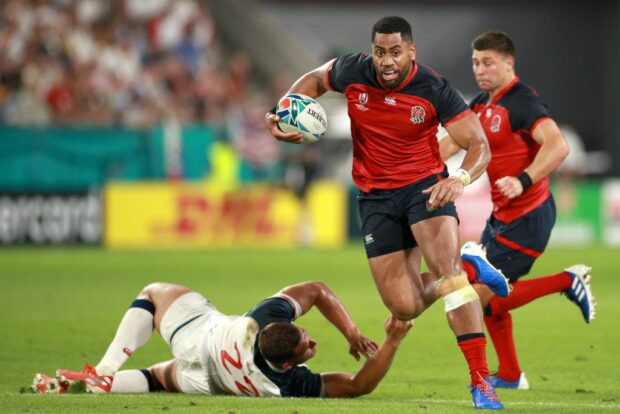
Making the right tactical decisions in World Cups is why coaches like Jones are paid the big bucks. The first question he has to answer with England is whether they are more effective with Farrell or Ford at 10.
The second question is whether, whichever fly-half England start with, there is enough clarity of thought and adaptability to switch from one midfield plan to the other during a big match if the initial strategy is not working.
After Youngs and Farrell lost the tactical plot against Scotland, and Ford came on to save the day, it is easy to understand why Jones has reverted to playing Ford and Farrell together.
However, against the bruising defences England will face from now on it could be that they will have to use the sledgehammer first, particularly against Argentina.
The Pumas rarely do well against South Africa because the Springboks use a tried and tested plan based on direct forward muscle and big crash-ball backs to overpower them.
England have enough in their armoury to do the same, but it means everyone being on the same page about when and how to maximise the powerhouse factor brought by Billy Vunipola, Tuilagi and Cokanasiga.
It also means knowing how to best exploit the raw pace of Jonny May, as well as Joseph and Anthony Watson, who were easily England’s two best outside backs against Tonga and the USA.
Yet, the back three favoured by Jones for the last year invariably features Elliot Daly at full-back. That leaves May, Watson, Cokanasiga, and Jack Nowell, should he return to duty, competing for the two wing berths – unless Daly’s aerial deficiencies see him supplanted at 15 by Watson.
My England team against Argentina would be predicated on power, and that is why Joe Marler, who is England’s best scrummaging prop, starts at loose-head rather than the multi-faceted Mako Vunipola.
Mako is coming off a bad injury and needs time to get back into top gear, while Marler could do serious harm to the Pumas scrum.
In the backrow I would keep Curry and Underhill in tandem with Billy Vunipola because Argentina pose a non-stop turn-over threat with their impressive breakdown technique, but have Courtney Lawes on the bench if line-out insurance is required.
Farrell returns to fly-half, Tuilagi to 12, and the in-form Joseph comes in at 13 with Slade not yet fully fit. May and Cokanasiga are on the wings with Daly at full-back – but with the proviso that if he is shaky under the high ball Watson could come off the bench to replace him before half-time.
England’s best bet to secure at least a place in the last eight is to use a clear-cut powerplay to put an end to Argentina’s quarter-final aspirations.
If it does not succeed in knocking Argentina’s door off its hinges then Jones always has the option of bringing Ford on to see if his double play-makers can pick the lock.
NICK CAIN

